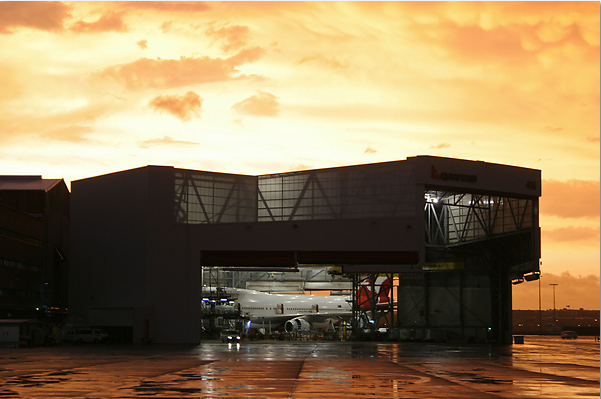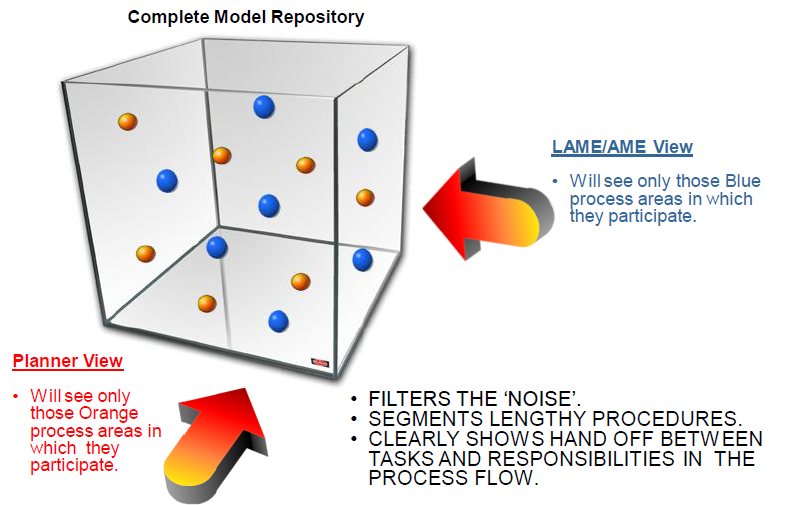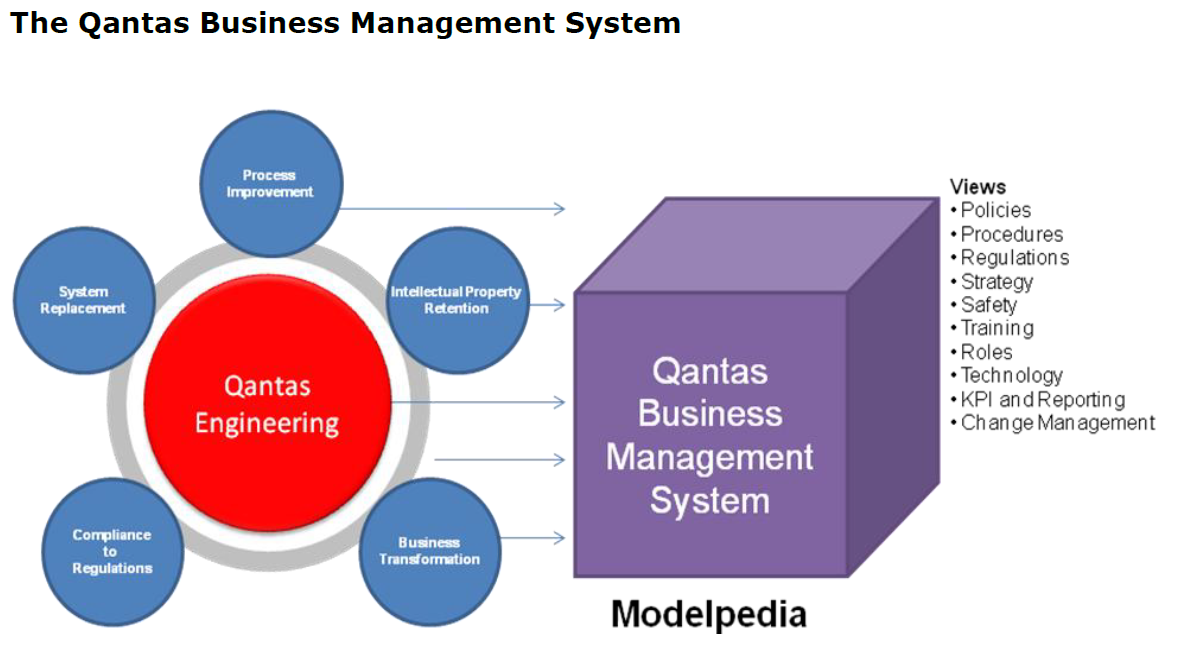Articles
| Name | Author | |
|---|---|---|
| Getting high value by spreading IT services | Dr Franck Duluc, Engineering & Maintenance Research Manager, Airbus | View article |
| How I see IT | Michael Wm. Denis, Vice President, Customer Engagement, InfoTrust Group | View article |
| Case Study: Documentation in the 21st Century | Julie Steadman, Principal Airworthiness Records, Virgin Atlantic | View article |
| MRO Networks | Michael Wm. Denis, Vice President, Customer Engagement, InfoTrust Group | View article |
| Case Study: A New MRO System for Qantas Engineering | Geoff Zuber, General Manager, Aerospace & Utilities, Holocentric | View article |
Case Study: A New MRO System for Qantas Engineering
Author: Geoff Zuber, General Manager, Aerospace & Utilities, Holocentric
Subscribe
QE, explains Geoff Zuber, General Manager, Aerospace & Utilities at Holocentric, upgraded IT by transforming Maintenance, Repair and Operations with Project Marlin and Holocentric.
The Marlin Program is a Business Project to implement a new computer system and business processes to manage the end-to-end process of aircraft maintenance within Qantas. It will allow the company to increase efficiency in maintenance operations, and provide a platform for future business improvement. Marlin will replace current legacy systems with the latest technology and will enable the business to enhance the configuration and maintenance management of the Qantas mainline fleet as it continues to grow in size and complexity.
In Project Marlin, the team is working towards implementing one of the most significant business transformation projects in Qantas Engineering’s (QE) history by redesigning and standardising 512 business processes, reducing over 300 computer applications to around 30 and implementing new Maintenance, Repair and Operation (MRO) processes.
A key driver for the establishment of the Project Marlin program was the introduction of the Airbus A380 to the Qantas fleet.
The legacy systems had limitations in supporting the A380’s complex configuration management requirements, so eight months prior to the delivery of the first A380, Qantas decided to consolidate its MRO platform to one software system (Maintenix) and model the end-to-end MRO process, using Holocentric. This enabled them to capture the real business improvements that could be realised from modelling the current and future state for A380 MRO.
Adopting this approach meant that QE was able to avoid the costs and inefficiencies that would result from having to migrate the A380 maintenance from the two legacy systems to a new platform at later date.
Because the A380 is a small and defined fleet, it provided an ideal test-bed for the Maintenix product and for using Holocentric in the process of mapping the interdependencies between MRO processes, systems and job roles.
Modelling the business to simplify change
As part of the introduction of the Marlin Solution, QE is using the opportunity to align its business processes with the new technology and has chosen Holocentric as the tool for doing this because of its flexibility and dynamic nature.
QE chose to enter into a strategic partnership with Holocentric to create an operational process and knowledge framework, from which future business performance improvements could be obtained. One advantage of using Holocentric for this process is the ability to benchmark current processes (or the ‘as is’ model) against future performance improvements and job roles (the ‘to be’ model). This ability to benchmark reduces the risk and costs normally associated with a large-scale transformational project such as Project Marlin.
Holocentric is enabling QE to utilise one modelling platform to map business processes and develop training material, as well as document policies, procedures and work instructions. It has also assisted in streamlining and simplifying the key phases of this large-scale project (strategy mapping, program planning and implementation).
This approach is providing QE with an over-arching framework from which to manage its MRO business, from corporate governance, business process improvement and value chain management, to system requirements and fulfilment, and the technical architecture that underpins this business.
QE is managing the different layers of MRO and the different aspects of its business (e.g. occupational health and safety, engineering, technical systems, compliance reporting etc.) through the Business Management Framework (BMF), which was developed in early 2011 to capitalise on the modelling of processes conducted in Project Marlin that define how the QE business operates. The BMF overarches all other frameworks, and provides a single portal that meets the requirements of all QE standards and regulations. The Project Marlin team ensured that the BMF was closely aligned to the regulatory framework, and so when individual processes were built into the model the new processes were already aligned with the regulations and QE’s own quality assurance processes.
The transparency and real-time view of the various layers and sections of the QE operation responsible for safety compliance, and contained in the Qantas Business Management System, enhances its governance. The project developed a business framework that was closely tied to the regulatory framework. This was then implemented in the models so that QE’s new processes are aligned with the regulations.
This ability to delve into the different layers and sections of the MRO business meets QE’s change objectives of being able to:
- Achieve real-time compliance reporting;
- Improve defect and maintenance requirement management;
- Provide point of maintenance acquittal, electronic certification and records entry at point of execution;
- Optimise and standardise key business processes across all locations;
- Automate the traceability of processes for audit or investigation purposes.

Modelling the human element of change
By using one platform to build a comprehensive picture of the MRO operations, QE is able to use its own employees to capture the relationships between people and the work they do, the dependencies between processes and the change impacts to roles and people.
Applying a model-based collaborative approach to streamlining QE’s MRO has helped coordinate and capture the input from multiple stakeholders and project members.
The process of building a complete picture of QE’s MRO operations and implementing the solution involved over 170 project employees, 4,000 business requirements to be incorporated into the model, 600 critical business processes to be reviewed for improvement opportunities, and over 5,000 users to be trained in the new streamlined MRO operation.
QE has been able to use many of its own employees for Project Marlin by selecting people from various business areas who have a good knowledge of the current business processes and systems. These people have been provided with training in the new computer system and other tools, such as Holocentric.
In order to address specific elements of the MRO process and specific stages of the change program QE divided the Project Marlin solution into 27 solution areas (or teams) which basically had responsibility for designing a homogenous component of the end-to-end MRO process. During solution design, these teams have come together to workshop and develop the new design for their particular solution area.
The Project Marlin team incorporates business skills from all areas of QE, including Line Maintenance, Heavy Maintenance, Maintenance Planning, Aircraft Airworthiness, Supply Chain, Finance, and Business Reporting. In addition, the project has project managers, change, communications and training specialists, reporting and analytics specialists, and all aspects of IT including infrastructure, architecture, testing, release and implementation management, data and systems development skills. The Subject Matter Experts on the Project Marlin team have been used in all aspects of the project from solution design, system testing and troubleshooting, user support, policy and procedure development and training.
This approach has not only made it easier to coordinate the multitude of stakeholders and project members involved in Project Marlin but it has also helped gain the support of employees early in the life of Project as they are able to see the relationship between their job role and the overall enhancements to the MRO process. Being able to publish the model and have employees share information about MRO processes electronically means that they are more likely and able to provide feedback on ways to further improve the overall business processes for MRO.
Benefits of using Holocentric
There are many benefits associated with using Holocentric, including the ability to ensure the business processes delivered through Marlin meet QE business requirements and regulatory obligations. It also provides a means to automatically publish the process and training information in an electronic and user-oriented format.
Prior to implementing Project Marlin, a comprehensive business requirements analysis was conducted, which showed that all QE MRO 6 processes have been impacted by Marlin, which comprise about 75% of all QE business processes.
As a result, QE is creating a knowledge base of information that is easy to update, which will be available to users via a web interface. This will then be updated as the business model is updated and will also be the source for creating new training materials automatically.
All of this information comes from one source of data within Holocentric, from which QE can also create detailed Work Instructions, based on Use Cases that hyperlink to graphical representations of the process models. This makes it easier for employees to understand the tasks they need to complete.
Using a visual model to represent key business processes and the interaction between people and process will help improve communication with business users, as information is presented in a way that they understand, and that is clear and meaningful to their job role.

Organic to organizational knowledge
Building a platform in Holocentric that links all of QE’s documentation and provides users with the latest information online via the Holocentric Modelpedia portal means that the company is able to maintain a comprehensive integrated knowledge base within the business. It also means business users across all hierarchical and functional roles are now empowered to contribute and collaborate in such a way that continuous improvement can inherently become the way QE does business.
This aspect of the project addresses the issue of retaining the Intellectual Property (IP) of QE. Having such a comprehensive knowledge base, which presents information about MRO processes in a visual, user friendly way provides QE with a robust process to quickly build the skills of new employees, while maintaining the fidelity of the compliance and MRO process.
Having a visual view of each person’s job role and business process also makes it easier for employees to quickly reference the steps and decision points required to meet QE’s MRO, airworthiness, quality assurance checks, business requirements checks and regulatory requirements from the one model.
Using the visual model to identify and provide access to all the various checks and regulatory requirements takes away the complexity of each process, and makes it easier for employees to conduct real-time compliance reporting and maintenance checks. Employees are able to do this because the model enables them to view a personalised representation of their role, which presents only the steps and systems that are relevant to their job. This negates the need to go hunting for the required information in a series of manuals to check that they have followed all the necessary processes to acquit a particular MRO process.
Converting corporate knowledge to a corporate asset
The QE business recognises that it is undertaking a large and very complex project, but they also have an understanding of what is required to successfully complete the Marlin journey.
By utilising Holocentric, QE is now well on the way to having a fully integrated corporate repository of knowledge which is a single source for business processes and procedures, training and change management material and policies. This repository essentially provides an integrated Business Management System for QE.

Comments (0)
There are currently no comments about this article.

To post a comment, please login or subscribe.